A Healthcare SaaS to Collect Disease and Medical Information
We built a cloud-based questionnaire engine that helps healthcare companies collect and analyze data on drug efficiency. It integrates directly into medical websites, allowing organizations to create and manage custom surveys. Partnering closely with the internal CTO, we addressed technical, expertise, and staffing bottlenecks, resolved legacy issues, refined core features, and laid the groundwork for long-term scalability.
The technical stack includes:
- Backend: Java, Spring Boot, Hibernate, Spark, PostgreSQL, Cassandra, MongoDB, Redis, Kafka
- Frontend: ReactJS, Redux, Material UI, HTML5, CSS3
- DevOps & Infrastructure: Docker, Kubernetes, Jenkins, AWS, Kibana
- Testing: Selenium
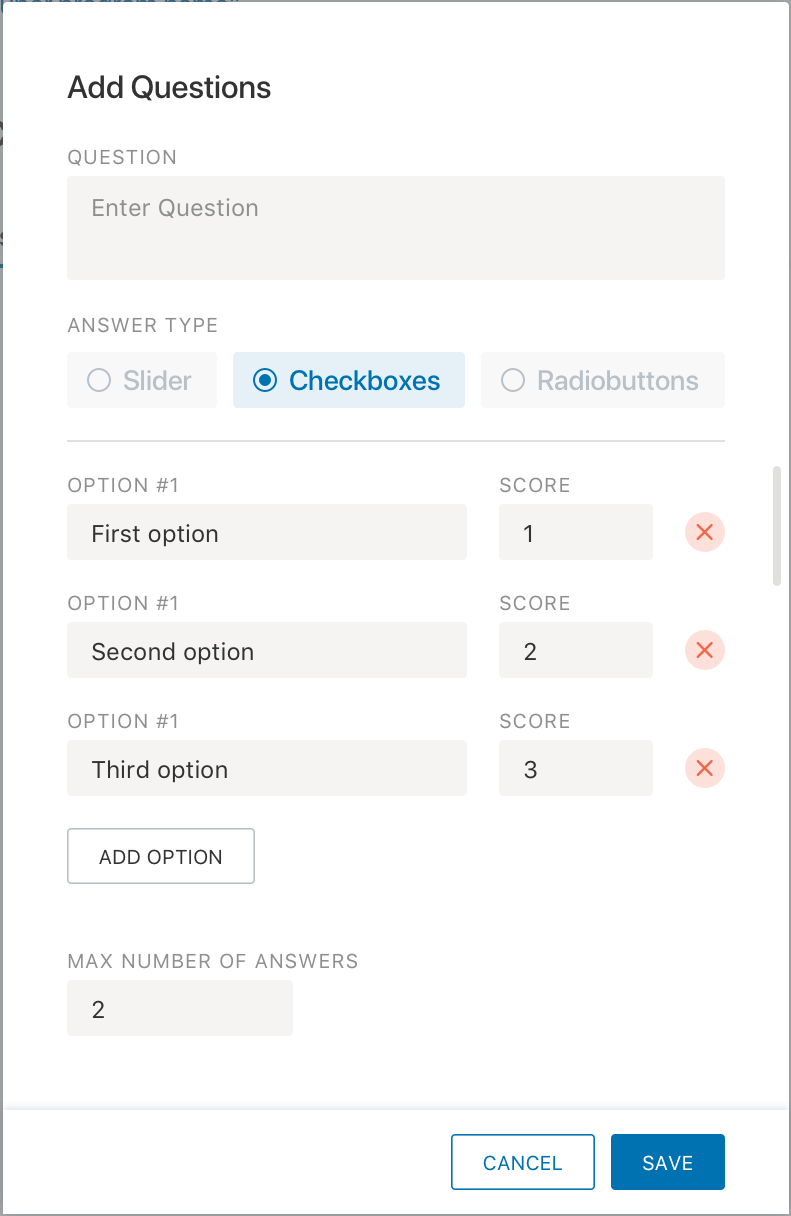
The goal
The established healthcare company came with a request to develop a SaaS tool according to their business requirements. The goal was to build a questionnaire system for healthcare sites to organize polls and flexibly gather information about medicine and diseases. They provided a high-level requirement list that described the concept and the idea. They had a local business team with a product manager and looked for a SaaS development company to handle all technical aspects.
Our role
We settled down the whole technical process, from UI/UX design, task management, business analysis, to back-end, front-end development, quality control, security compliance, full backend and server maintenance. Partnered closely with the internal CTO to shape the MVP roadmap around business priorities, we cut unnecessary costs. We managed to develop and release MVP in 5 months, covered the full tech scope, and continue to support sustainable growth.
The team
A dedicated development team of 8 engineers was created for this project, including 1 UI/UX designer, one project manager, one business analyst, three developers, one QA engineer, and one DevOps. After releasing MVP, this team was converted into part-time to optimize support cost and has been supporting the project working on all ongoing requirements and changes using scrum methodology and agile approach.
Challenges
With no in-house tech team, we stepped in to design a scalable SaaS solution from the ground up. Replacing the outdated tech stack, we built a secure backend for data processing, user management, and GDPR compliance. A microservice architecture enabled fast performance, while the intuitive UX was tailored for medical staff. The platform now integrates seamlessly with the company’s infrastructure and supports future growth.
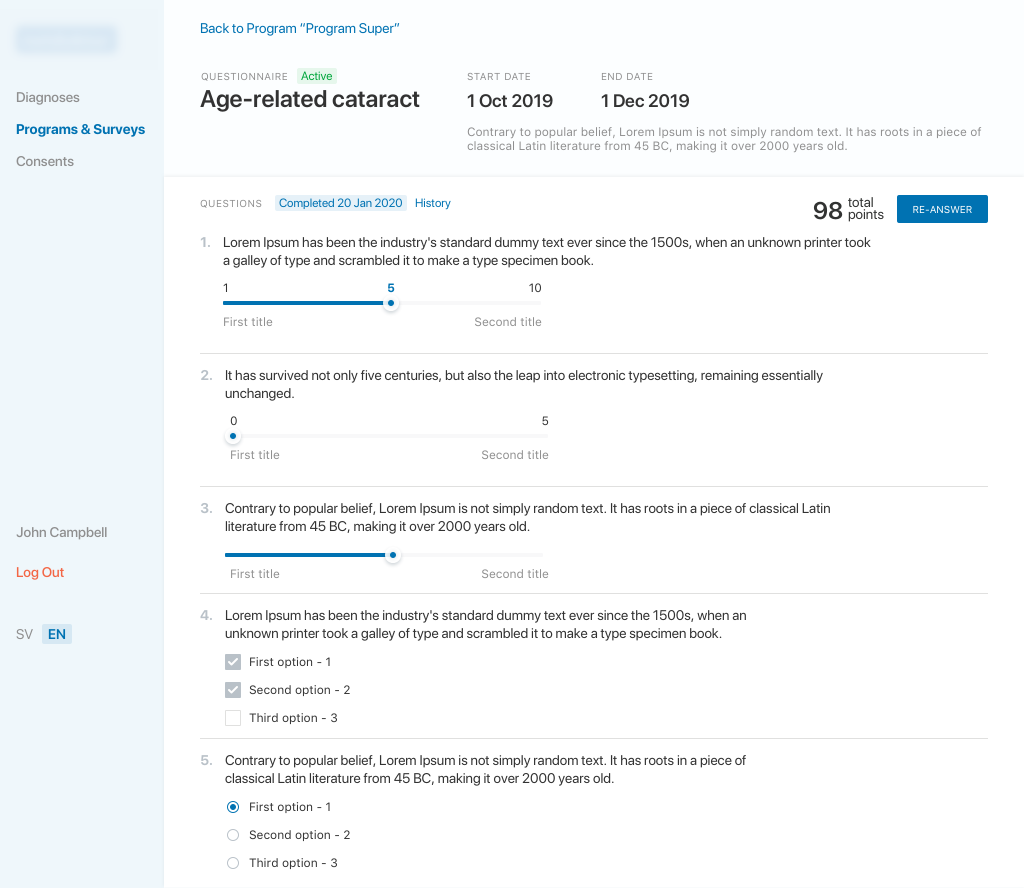
Diagnoses & Medicine
We built a simple and flexible solution for healthcare websites to run questionnaires without extra development.
Registered users can add and manage their diagnoses and medications. Based on this data, they receive personalized questionnaires tailored to their medical profile.
For example, if a user lists age-related cataract, they receive personalized questionnaires tailored to their condition and further treatment needs.
Creating Questionnaires
Administrators can build programs that include embedded questionnaires. These programs can be public, open to all users, or private, where users are added by invitation only. Questionnaires can either be part of a larger program or function as standalone tools.
Each questionnaire is fully customizable. Administrators can add as many questions as needed and define specific answer options and logic for each, ensuring relevant and targeted user input.
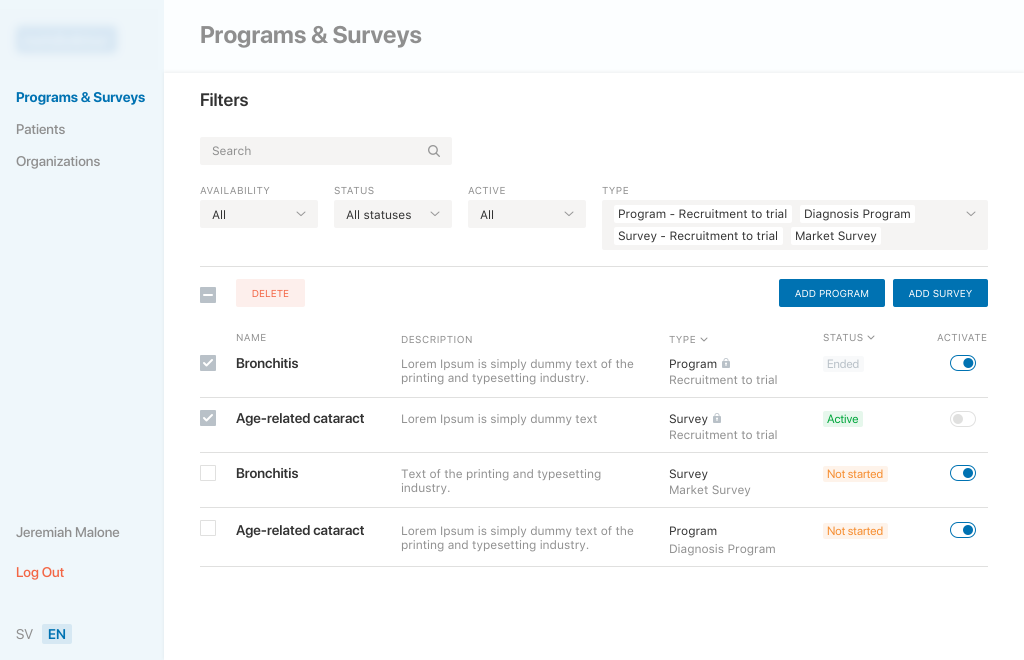
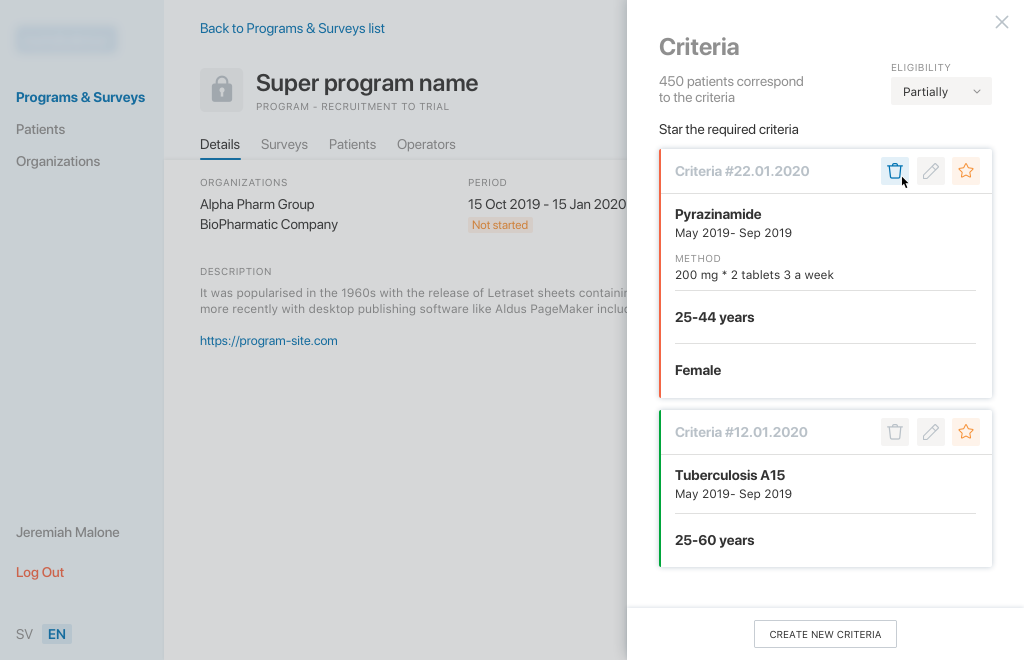
Flexible Criteria
A company can define flexible criteria within a program to ensure it targets the right audience. Depending on these settings, the program will be visible only to patients who meet specific conditions, such as age, diagnosis, or medical history.
For private programs, the system automatically filters and suggests suitable candidates based on the criteria, allowing administrators to manually review and add them as participants..
Managing Companies
Administrators can manage healthcare companies participating in or commissioning specific studies based on questionnaires. Each company can be added to the system with detailed information, such as name, type of organization, and associated medical programs. Admins can edit or remove companies as needed, ensuring data stays current.
In addition, each organization can have multiple contact persons, such as doctors, coordinators, or representatives, assigned to it. These contacts are fully manageable within the platform, making it easier to coordinate communication, assign responsibilities, and track involvement across different studies.
.
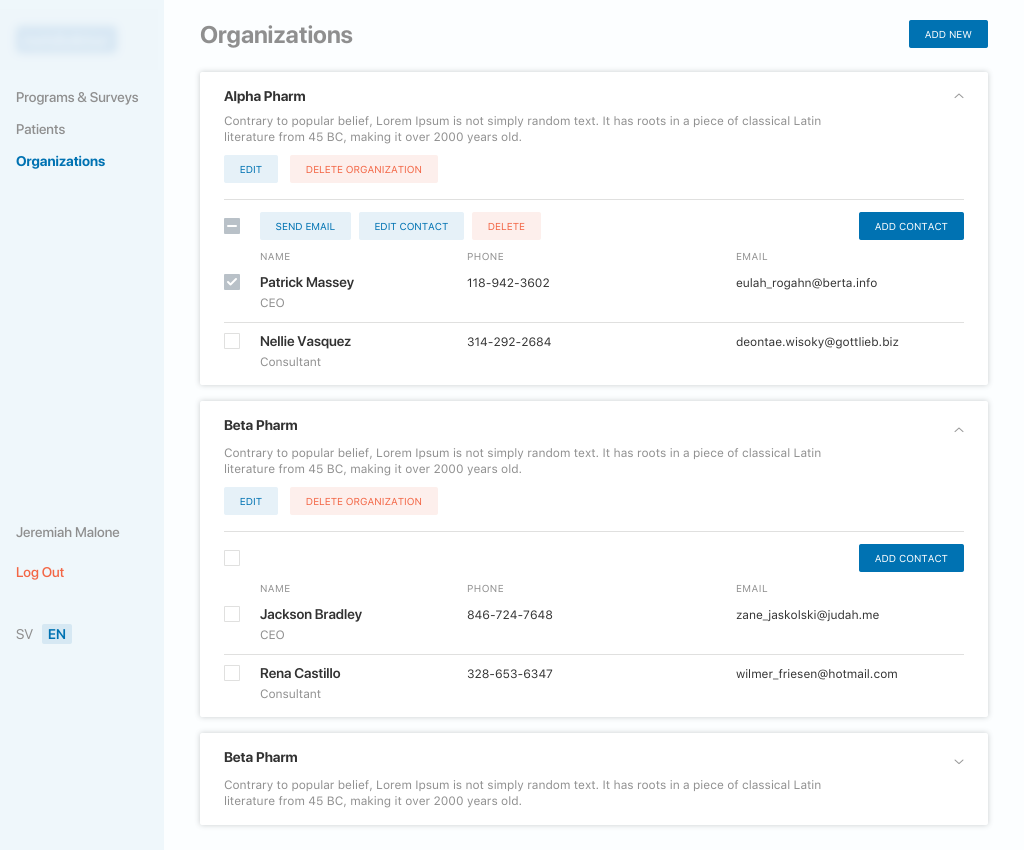
Mobile Version
We designed and developed a mobile version of this healthcare SaaS app to ensure easy access from smartphones and tablets. In addition to the web interface, we created 35 responsive screens tailored for smaller devices to deliver a smooth, user-focused experience.
Built as a web application, it runs seamlessly on mobile browsers. This approach eliminated the need for native apps, significantly reducing development time and costs—resources our client could instead invest in marketing and growth.
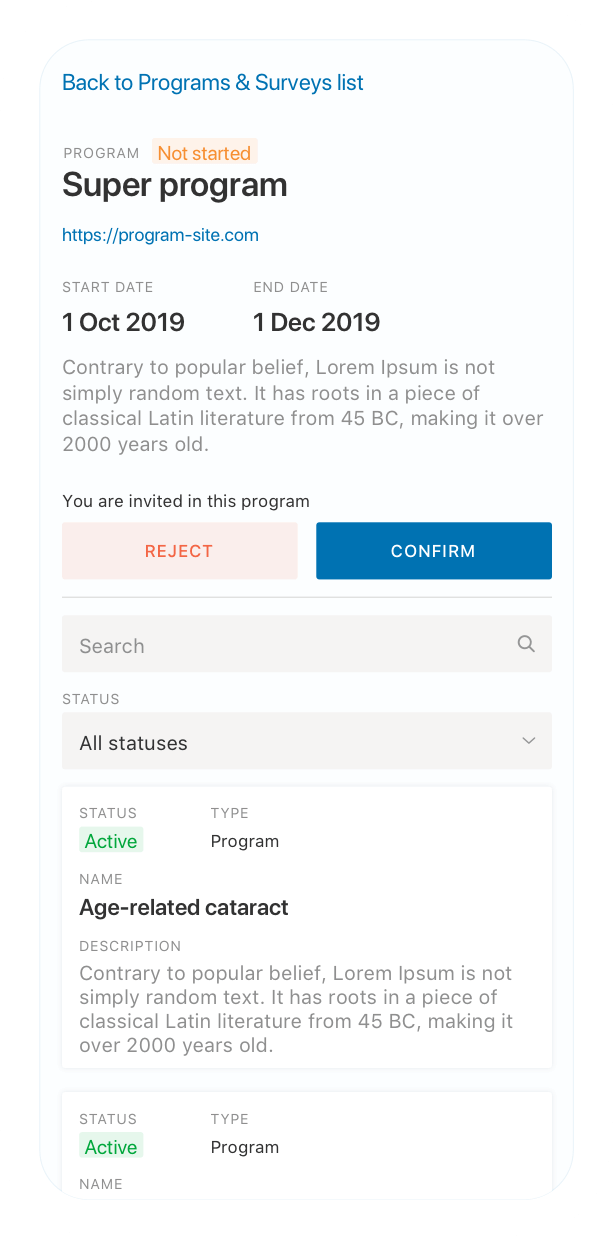
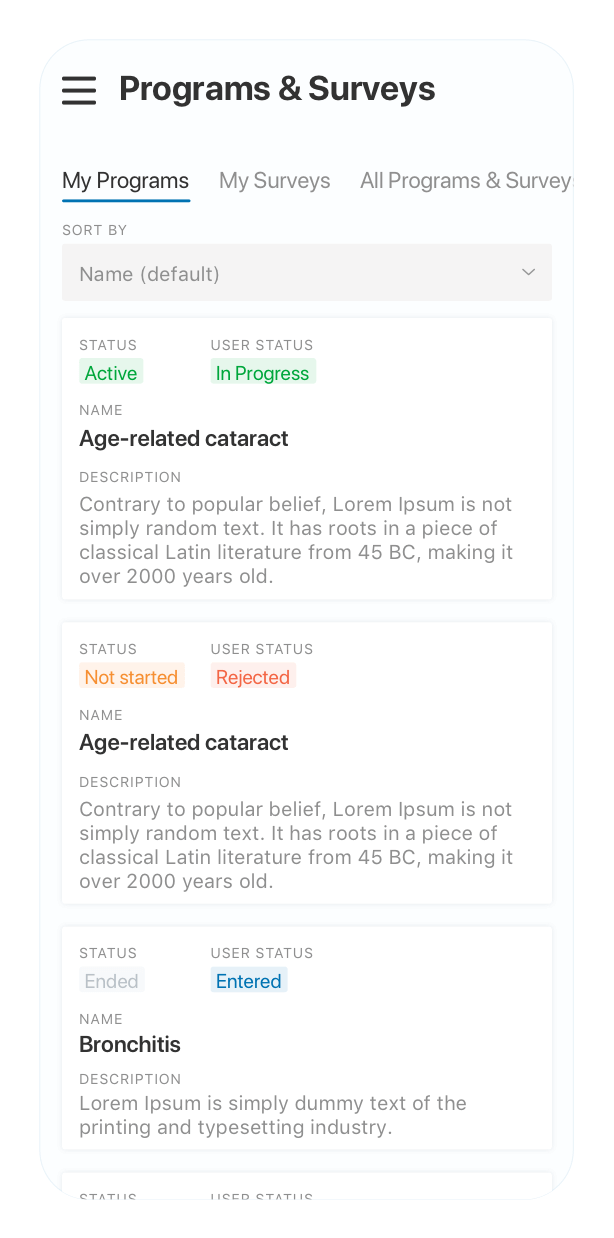
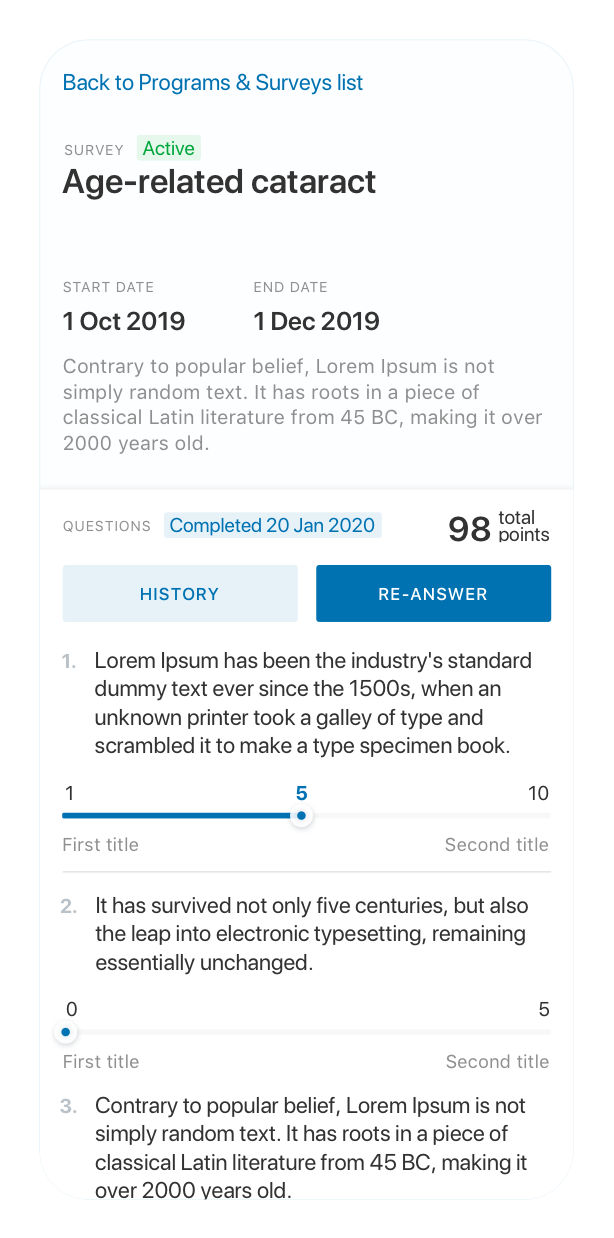
Get Insights from Real SaaS Builds
Enjoyed the read? We write these case studies and articles to share what works — and what doesn’t — in real SaaS delivery. Got a challenge of your own? Let’s talk tech.

Ryzhokhin